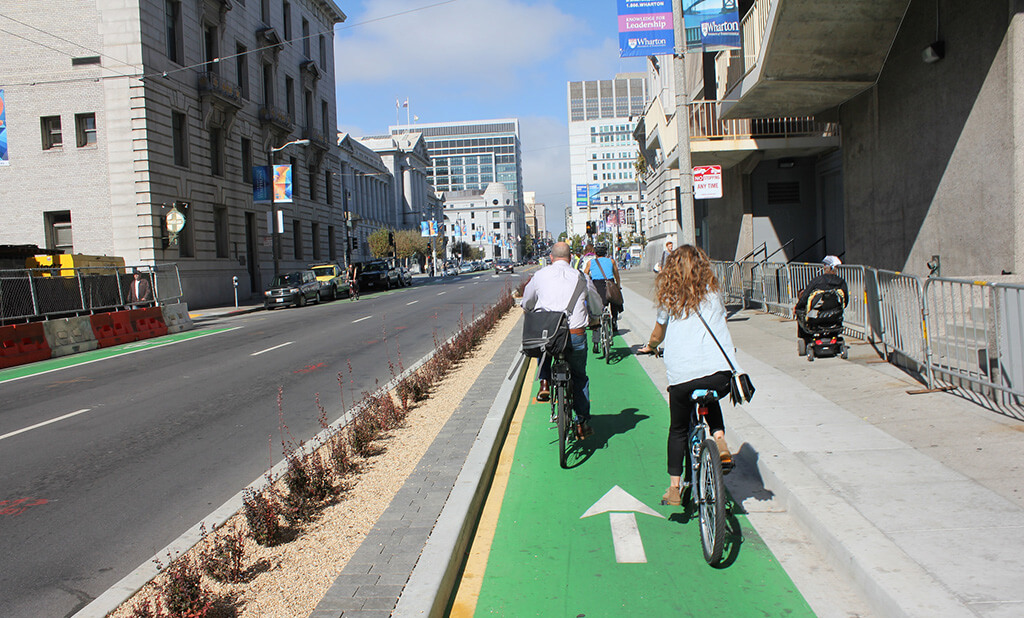Autumn Gear Guide
Find inspiration in our Gear Guide that will keep you out on your bike through wind or rain.
Download NowBuild safe and separated bike lane projects and people will flock to it like bees to honey, according to a new study that once again provides cities with actual data needed to build-out bona fide bicycle networks. The recent study sheds light on the effectiveness of cycling infrastructure in reshaping public opinion and promoting active […]
Build safe and separated bike lane projects and people will flock to it like bees to honey, according to a new study that once again provides cities with actual data needed to build-out bona fide bicycle networks.
The recent study sheds light on the effectiveness of cycling infrastructure in reshaping public opinion and promoting active transportation. Conducted by the Economic and Social Research Institute (ESRI) in Ireland, where a massive bicycle network has been announced, the study examines the behavioral science behind the implementation of cycling and walking networks and their impact on communities.
According to the findings published in a report titled Active travel infrastructure design and implementation: Insights from behavioural science, the installation of cycle lanes and similar initiatives tends to increase public acceptance once they are implemented. The research, which reviews both local and international studies, underscores the positive effects of cycling and walking schemes on various aspects, including cycling and walking rates, local businesses, and traffic congestion.
“Replacing car travel with walking and cycling is at the core of the shift to healthier and more sustainable societies,” the report says.
Key findings from the study highlight the significance of challenging the status quo to garner support for new initiatives. Despite initial opposition or skepticism, the report suggests that public opinion often shifts in favor of cycling infrastructure once the benefits become evident. However, policymakers are cautioned against adopting a paternalistic approach in promoting active travel schemes, as it may risk alienating segments of the population.
This might sound all too familiar to some, but the study shows that critics of cycle lanes frequently express a sense of powerlessness and frustration regarding the alterations made to their surroundings to promote active transportation. They complain of the absence of substantial engagement and consultation, which the researchers argue is crucial for gaining public backing for such endeavors.

San Francisco’s Polk Street protected bike lane. Photo by Nick Falbo, Alta Planning.
Sounds like people are skeptical of a perceived inconvenience or other negative impact of separated bike lanes, but once installed and operational, those concerns go out the window.
The report identifies several psychological barriers that influence public perception, including the ‘status quo bias’—a preference for maintaining the current state of affairs—and concerns about safety and effectiveness. Addressing these misconceptions through transparent communication and meaningful consultation emerges as a crucial strategy in fostering public support for cycling infrastructure projects.
Furthermore, the study emphasizes the importance of highlighting the tangible benefits of active travel initiatives. And there are plenty of them including the most obvious such as reduced emissions, improved air quality, enhanced public health and the safety of vulnerable road users. But people don’t seem to be getting the connection between these bike lanes and greater environmental good, according to the study. By bridging the gap between public attitudes and climate action, policymakers can effectively communicate the broader implications of cycling infrastructure in contributing to sustainable urban development.
“Opposition to traffic policy changes is not unique to Ireland,” wrote Dr. Shane Timmons, senior research officer with the ESRI’s Behavioural Research Unit. “However, in multiple countries, research finds that people become more positive about changes once they are implemented.”
As cities worldwide seek to prioritize sustainable transportation options, the insights gleaned from this study offer valuable guidance for policymakers and urban planners looking to put forward much-need bike lane projects. By leveraging behavioral science and engaging with communities proactively, cities can pave the way for a more bike-friendly and sustainable future.
The full report, ‘Active travel infrastructure design and implementation: Insights from behavioural science’, is available here.
Find inspiration in our Gear Guide that will keep you out on your bike through wind or rain.
Download Now
Leave a comment